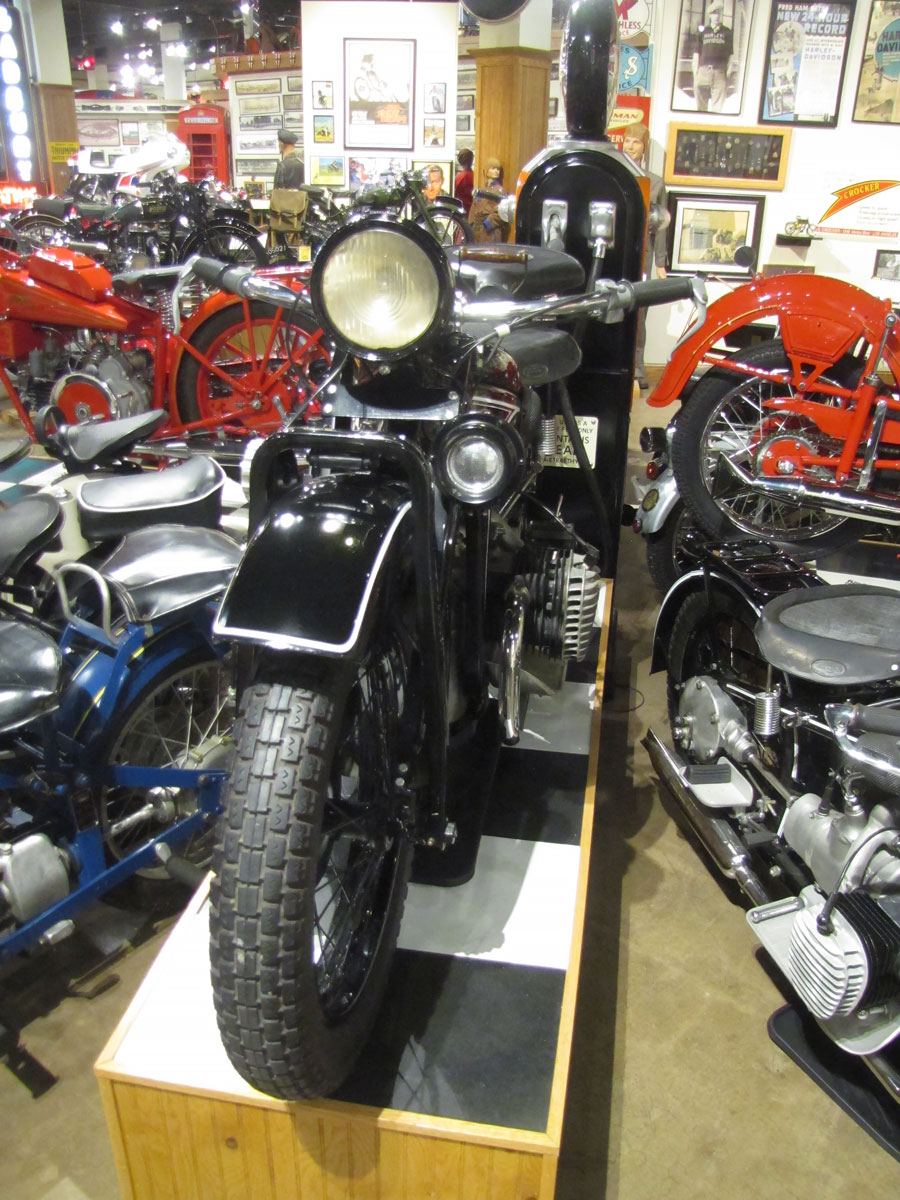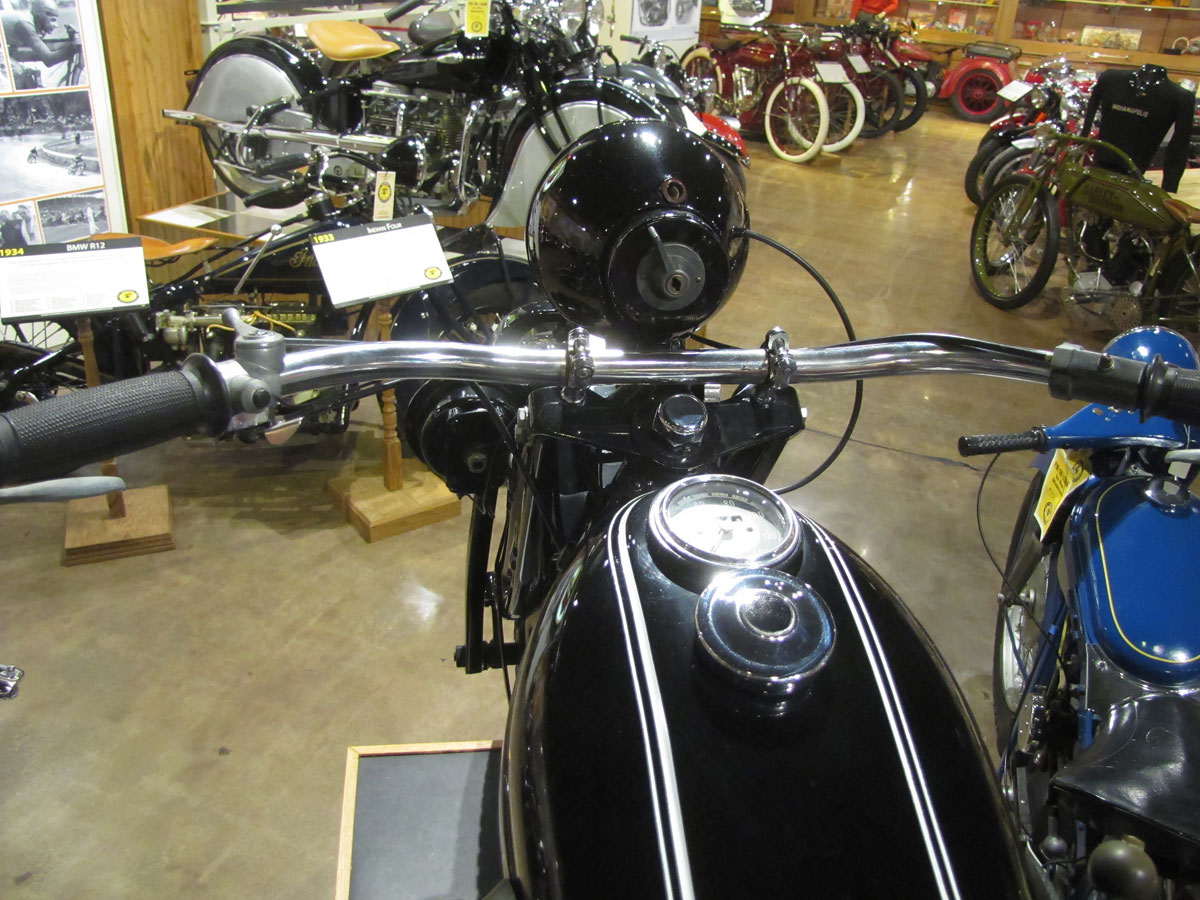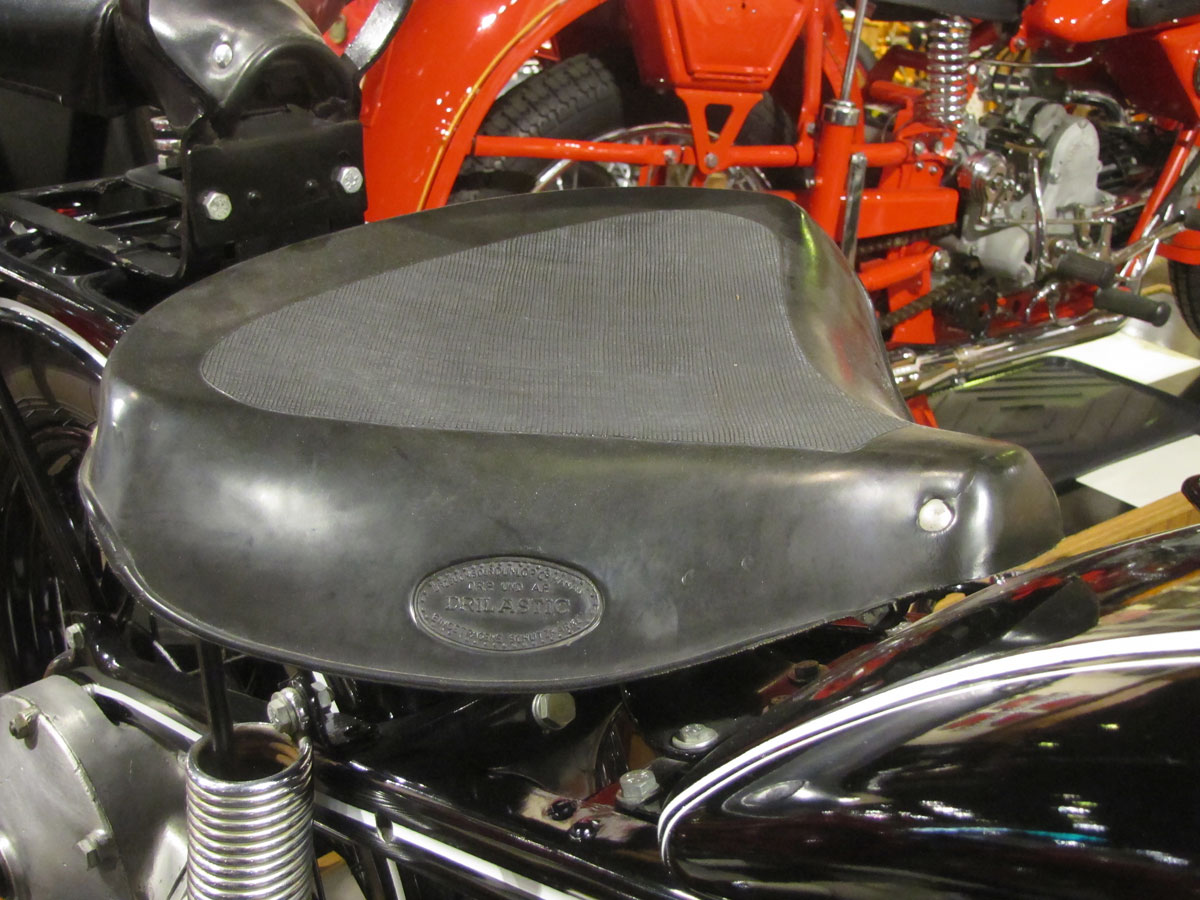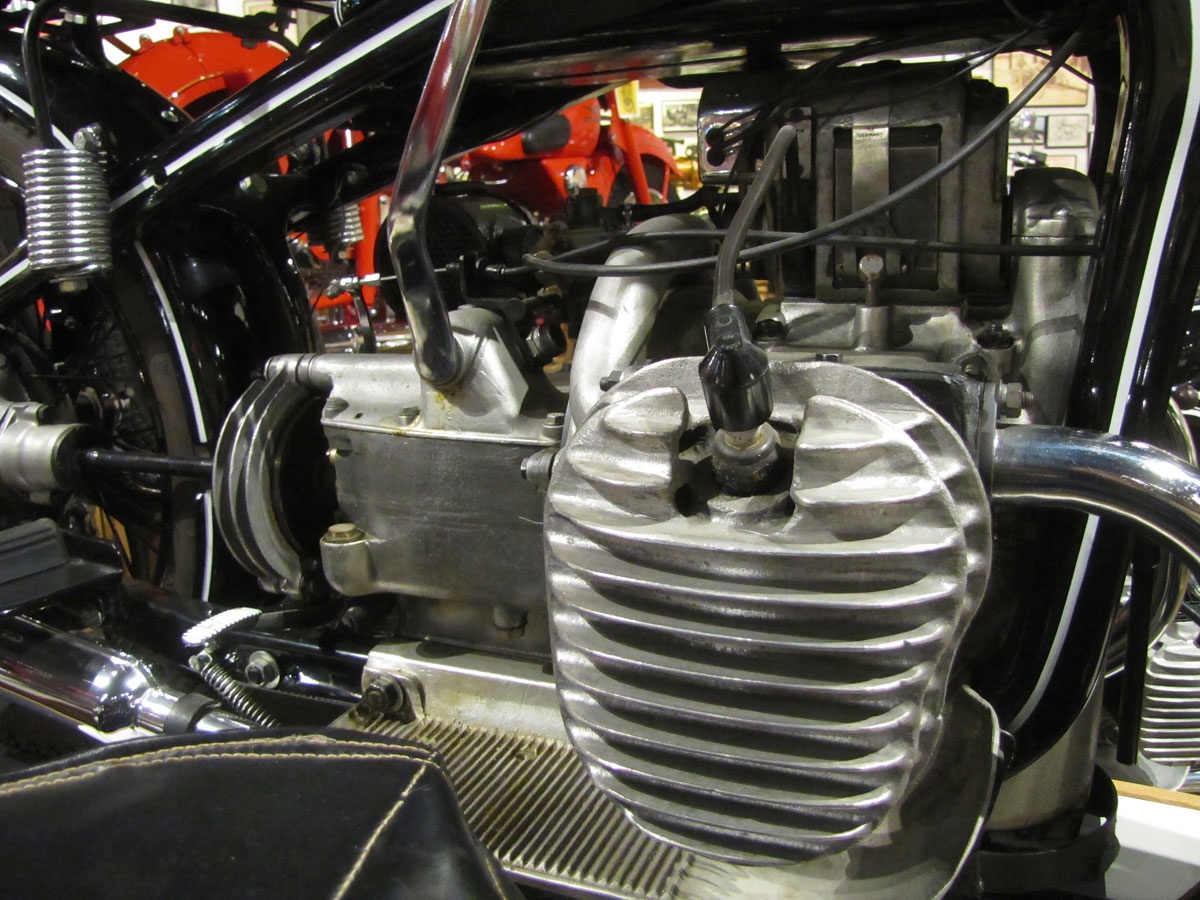
In the years leading up to 1921, a couple of years before BMW began to make complete motorcycles in 1923, they were supplying “boxer” twin engines to airplane manufacturers. The opposed twin design put the cylinders out in the air and kept this aircraft engine cool. Of course 95 years later the design still works, but in the past couple of years the “water boxer” appeared, driven by performance needs and various emissions constraints.
At the very beginning of Bavarian Motor Works, in 1916, Max Friz was the Chief Design Engineer. Friz’s focus was designing aircraft engines. But then he helped engineer the new model R32 motorcycle shown in 1923. The R32 had the crankshaft in-line, cylinders opposed and used a three-speed transmission through a drive-shaft. The engine design employed sealed lubrication, not “total loss” like most manufacturers were still using. Continued development brought the introduction of the interesting pressed steel frame in 1929. In 1935 the telescopic fork replaced the leading link fork for the new R12 and R17, and evolution continued. In 1936 came the tubular frame and in 1938 the “plunger” rear suspension. In 1955 the traditional swing-arm design frame became standard for all production street bikes. And so many BMW design elements were set for decades to come.
The origins of BMW are now about 100 years old. While we might think their motorcycles seem similar over time; black paint/white pinstripes, shaft drive, many “boxer” engine designs, plunger rear suspensions with leading link forks, there are interesting innovations along the way. And while they now seem incredibly successful, two European wars, a national depression and a period when their machines were outdated and slow sellers in America, BMW surmounted these problems. Their sophisticated design work even includes “making” niches, such as “adventure touring,” and one could argue, BMW offered one of the original “sport touring” bikes.
When you visit the National Motorcycle Museum, you’ll get to view this BMW R12 and other European motorcycles from Pannonia, NSU, Puch, Ducati, Horex, Derny, CZ, Bultaco, Husqvarna, Moto-Guzzi, Parilla, Maico, Bultaco, Zundapp, Benelli and more. A replica of Daimler’s “Einspur” from 1885 is even here for you.
Specifications:
- Engine: Four Stroke Opposed Twin
- Induction: Side-Valve Heads
- Bore & Stroke: 78mm x 78mm
- Displacement: 745cc’s
- Carburetion: Amal 6/406SP
- Lubrication: Pressurized/Wet Sump
- Horsepower: 20HP
- Transmission: 3-Speed/Hand Shift
- Ignition: Magneto
- Electrics: Battery/Bosch Generator
- Frame: Pressed Steel/Double Loop
- Suspension: Leaf Spring Fork/Sprung Seat
- Wheels/Tires: 3.50 x 26 / 3.50 x 26
- Brake/Front: 200mm Drum
- Brake/Rear: 55mm Band on Drive Shaft
- Wheelbase: 54.5 Inches
- Weight: 356 Pounds

































Leave a Reply
Want to join the discussion?Feel free to contribute!